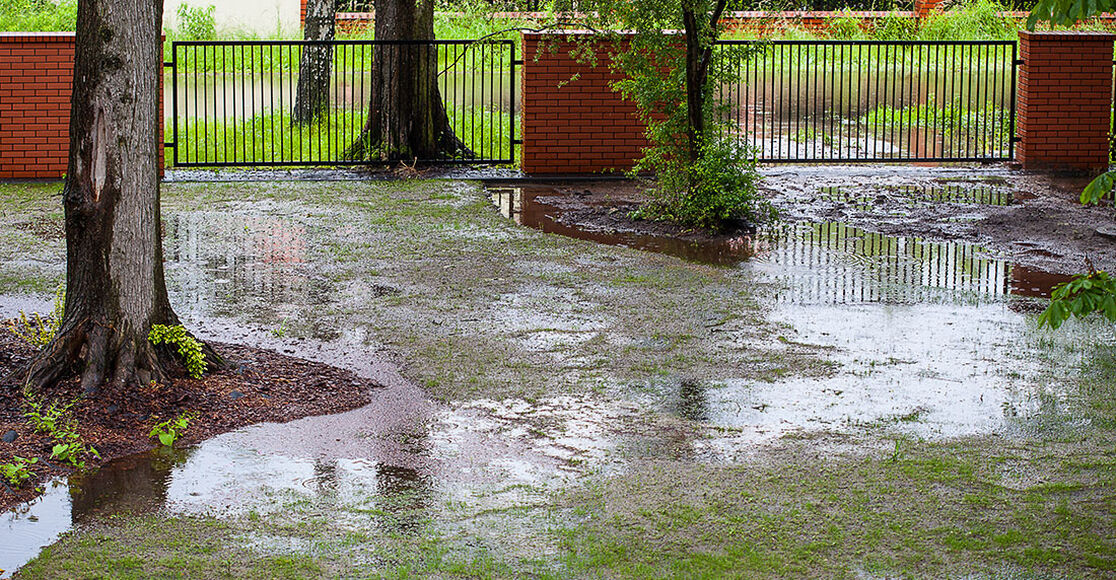Waterlogged lawns are usually the result of improper drainage in the soil and are often associated with pools of water that form around heavy foot traffic areas like walkways or patios. If not attended to promptly, your grass can develop fungus in these types of conditions. Heavy water buildup on your lawn can also rot the roots of your grass, causing it to turn yellow.
While there is no quick fix for reviving a waterlogged lawn, there are a few steps you can take to begin the rebuilding process.
Step 1: Avoid Foot Traffic
Soil compaction is typically one of the top culprits of waterlogged lawns. When soil is too tightly compacted, it's hard for nutrients like oxygen and water to be absorbed by grass roots. This results in a squishy look and feel in your grass. To prevent this, avoid walking on grass as much as possible and be sure to remove all heavy lawn furniture from the affected areas. Continuing to walk on the damaged areas could pull up the grass, turning your lawn into mud.
Step 2: Remove the Water
Standing water left anywhere on your yard can not only be an eyesore, but it can also become a health hazard for you and your family. Standing water can breed dangerous fungus on your grass if left untreated. If you notice the water hasn't diminished after a few days, remove the water into a nearby storm drain or a runoff area of your yard by using a broom with a soft bristle brush to prevent pulling on grass blades.
Step 3: Aerate the Soil
When soil becomes congested, it's best to relieve it with an aerator. The deep holes created by an aerator like the FLEX' Plug Aerator Attachment can help air out compacted soil, allowing the built-up water to get to the grass roots. If your yard experiences flooding conditions regularly, you should aerate your lawn twice a year to prevent future soil compaction.
Other Tips to Consider
- If you notice your lawn hasn't dried out over time, apply a thin layer of top soil over the affected areas to absorb the moisture.
- If you live in an area that receives heavy rainfall, consider over-seeding your lawn in the spring and summer. Applying an extra layer of grass seed will thicken your lawn over time, helping it to absorb more moisture.
- Constant water buildup on your lawn could be the result of a more serious sewage problem. Seek professional help if the problem continues.
